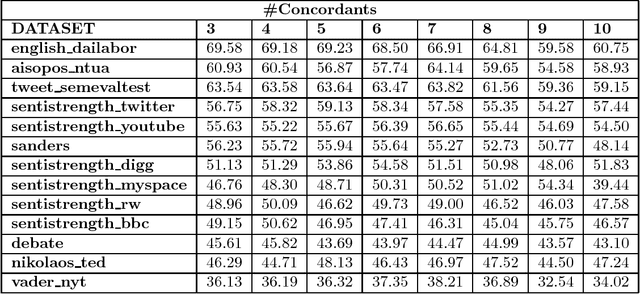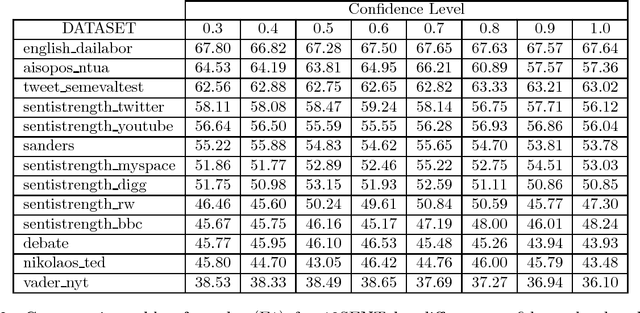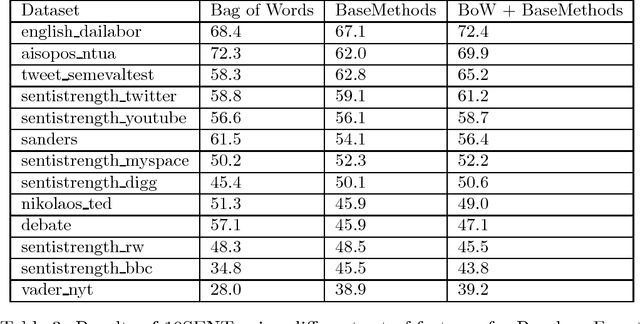Marcos A. Gonçalves
10Sent: A Stable Sentiment Analysis Method Based on the Combination of Off-The-Shelf Approaches
Nov 21, 2017



Abstract:Sentiment analysis has become a very important tool for analysis of social media data. There are several methods developed for this research field, many of them working very differently from each other, covering distinct aspects of the problem and disparate strategies. Despite the large number of existent techniques, there is no single one which fits well in all cases or for all data sources. Supervised approaches may be able to adapt to specific situations but they require manually labeled training, which is very cumbersome and expensive to acquire, mainly for a new application. In this context, in here, we propose to combine several very popular and effective state-of-the-practice sentiment analysis methods, by means of an unsupervised bootstrapped strategy for polarity classification. One of our main goals is to reduce the large variability (lack of stability) of the unsupervised methods across different domains (datasets). Our solution was thoroughly tested considering thirteen different datasets in several domains such as opinions, comments, and social media. The experimental results demonstrate that our combined method (aka, 10SENT) improves the effectiveness of the classification task, but more importantly, it solves a key problem in the field. It is consistently among the best methods in many data types, meaning that it can produce the best (or close to best) results in almost all considered contexts, without any additional costs (e.g., manual labeling). Our self-learning approach is also very independent of the base methods, which means that it is highly extensible to incorporate any new additional method that can be envisioned in the future. Finally, we also investigate a transfer learning approach for sentiment analysis as a means to gather additional (unsupervised) information for the proposed approach and we show the potential of this technique to improve our results.
 Add to Chrome
Add to Chrome Add to Firefox
Add to Firefox Add to Edge
Add to Edge